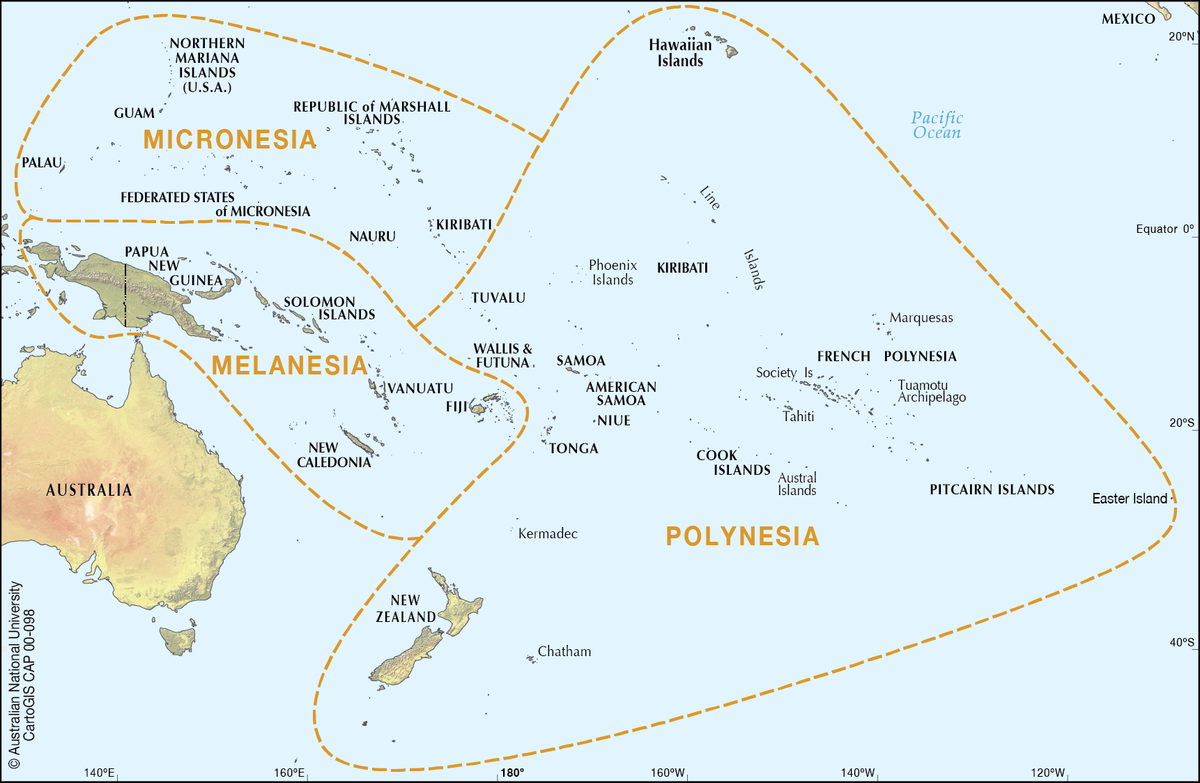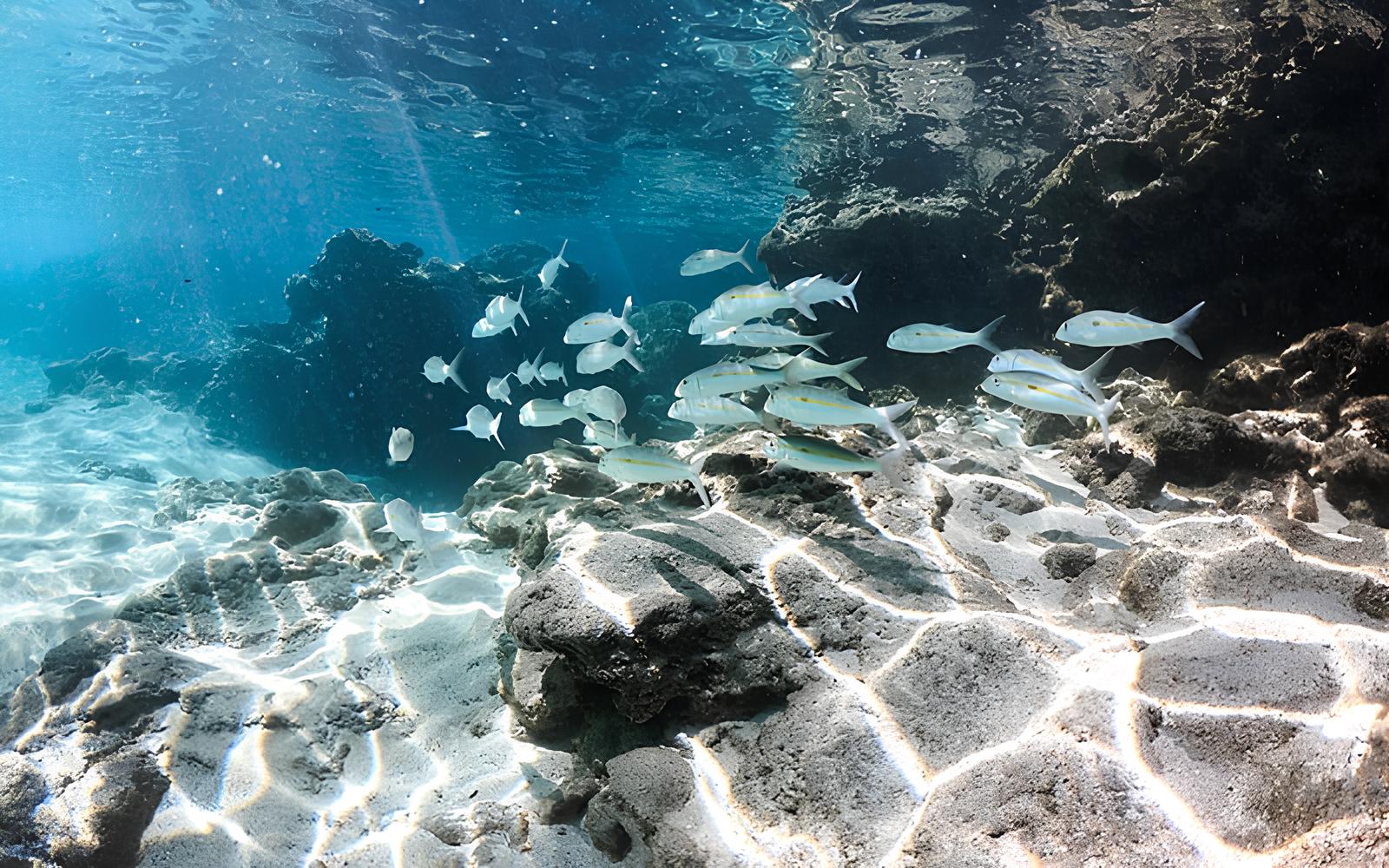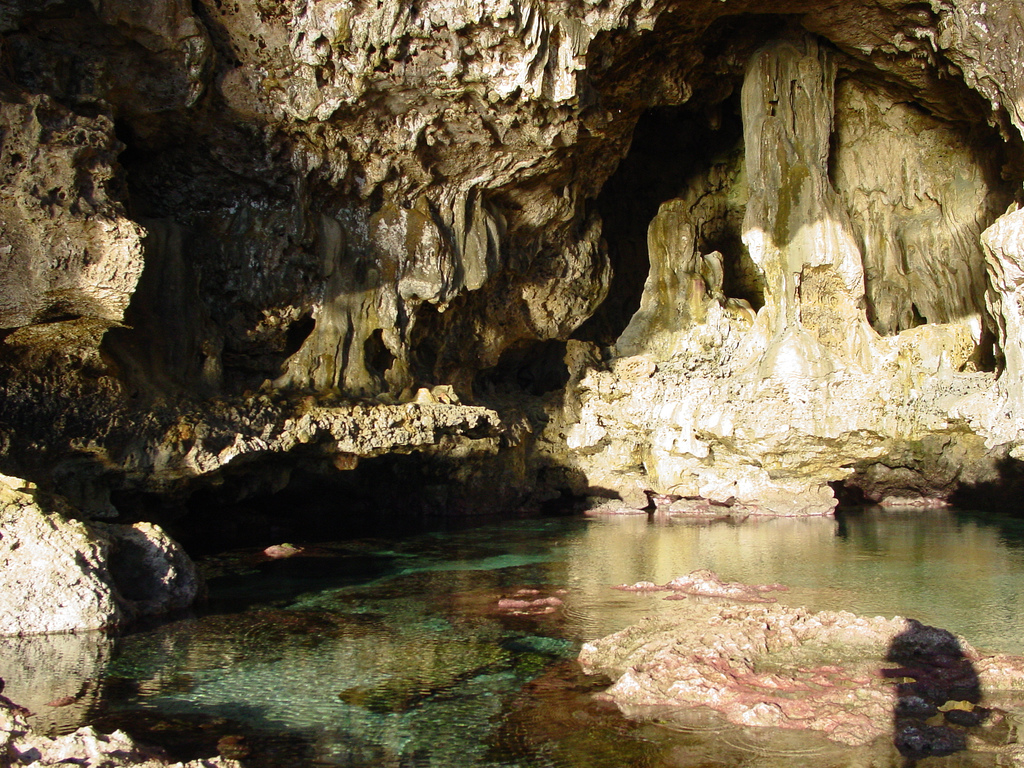Niue, The Highest Coral Island

Niue is an island country associated with New Zealand, positioned between Tonga, Samoa and the Cook Islands. Unlike them, Niue is a single island which area is about 261 km² (100 sq mi), and a rather elevated one, with two levels: the lower, a coastal terrace, 25-27 m (80-90 ft) high, and the higher, a limestone plateau reaching 60 m (200 ft) above sea level. Coral reefs surround the whole island, with the only major break next to the capital, Alofi. Although Niue is just a small island with a population of approximately 1,500 people, it offers plenty of activities. Diving, snorkelling, fishing and other types of water recreation, traditional to most tropical islands, are accompanied by whale tours and 13 hiking trails, from easy to hard. Experience the one-of-a-kind landscapes and the blissful authenticity of Niue!
History

The first settlers arrived to Niue from Samoa in approximately 900 AD. The second wave of inhabitants came from Tonga in the 16th century. The island was discovered by Europeans in 1774, when Captain James Cook tried to land Niue but was unable to do that because of Niueans’ prohibition.
On October 26, 1846 the northern village of Mutalau accepted Pastor Peniamina and experienced Cristianity, which later spread throughout the whole island.
Population
Niue has a rather small population, with only around 1,600 inhabitants, dwelling in 13 villages situated along the island’s coast. These are Alofi, the capital «city» with 597 people (as of 2017), Avatele (Oneonepata), with 150 people, and smaller Kikutavake, Liku, Lakepa, Mutalau, Makefu, Hakupu, Namukulu, Tamakautoga, Toi, Tuapa, and Vaiea.
Due to extensive emigtation to New Zealand and Australia, Niue’s population continues to drop since its peak of 5,200 people in 1966.
How to Get to Niue

The good news for travellers wishing to visit the island is that it doesn’t require a visa for a stay less than 30 days. Everything you need is a confirmed reservation for accommodation and a return plane ticket. Note that your foreign passport must be valid for at least 3 months from arrival date.
There are two ways to get to Niue: by plane or by boat. The island’s airport situated next to Alofi is called Niue (or Hanan) International Airport. There is no public transport on the island, but almost all the accommodations provide free transfers. It’s possible to fly to Niue from Auckland, New Zealand, twice a week: on Wednesdays and Saturdays, arriving on Tuesday and Friday, respectively. Remember that tickets cost more during the periods around religious holidays, such as Easter or Christmas, because of many Niueans returning home.
You can also choose to come to Niue by your own or rented yacht outside the cyclone season: search the information on weather conditions on the website of Niue Yacht Club. This is the only water transportation option, because the island doesn’t have any ferries from foreign ports. You should also note that there is a harbour fee, which costs $15 per day.
Getting Around
As it was mentioned above, Niue doesn’t have a public transport system. The villages themselves are rather small, so it’s okay to walk, though you can rent a bicycle or a motor vehicle. To get around between the settlements, you can rent a car: it takes approximately 75 minutes to go round the whole island. For driving, you will need a Nieuean driving licence, which can be obtained from the Police Department for $22.50 upon presentation of your home driving licence (note that the department doesn’t work on weekends). Until Monday, it is allowed to drive without a local licence. Note that there is an only petrol station on Niue, called Central Services: it is located in Iofi North, Alofi South. If you decide to ride a bicycle, head either to Alofi or Niue Rentals. This method of transportation takes three hours to go around the island.
What Is There to See and Do
.jpg)
Niue distinguishes itself by the unique relief, featuring multiple caves and limestone arches, which makes it a great hiking destination. Two trails — the Matapa Chasm and Talava Arches — can be accessed from the northern end of Hikutavake Village. This settlement is a starting point for one more landmark, a sea track to Hikutavake Bay, which has pools teeming with tropical fish. During low tide, this spot is perfect for snorkelling.

While Matapa Chasm is known as an excellent swimming and snorkelling area, encased by 19 m cliffs, Talava Arches is famous for being the place noted by Captain James Cook in the late 1700s. The latter trail is considered a strenous walk, so it’s advisable to combine it with the former one to refresh and cool yourself. Off the coast, dolphins and whales can be spotted.
Huvalu Forest Conservation Area occupies 20% of Niue’s land and is a major habitat for wildlife and source for food. The forest is pretty safe to visit due to the lack of poisonous or dangerous flora and fauna. Moreover, the area is largely flat, which makes it easier to exlpore; however, avoid visiting it without a guide.
Liku Sea Track and Cave, on Niue’s east coast, is a 500-m-long path that leads from Liku Village to the beach. During low tide, the coastal area gets dotted with tiny beaches, 5 to 15 metres long, along with magnificent reef pools. Pay attention to the tide, and leave before the water rises, not to be locked between the sea and the outer sea wall.
Anapala Chasm, next to Hakupu Heritage Park, is a trail descending to the depth, where is a cool fresh water spring. This is an important place for Niueans, for the island doesn’t have any rivers or lakes.
Togo Chasm, halfway between Hakupu and Liku, is a track that takes 45 minutes to pass. It leads through bushes to a stunning secluded beach that has coconut trees and a rock chasm, accessible via a long ladder.

Avaiki Cave, 7 km north of Alofi, is a limestone cave featuring pools that can be accessed during low tide. Note that swimming is forbidden on Sundays and during the koloama (sardine-like fish) spawning season. One side of the cave is opened to the reef, which makes it a fabulous spot for watching sunset.
Uluvehi Sea Park, near Mutalau, has a sea track equipped with a concrete path, so it’s possible for everyone to come and see the sights. Past the road, there are two caves.
As for activities, it should be noted that Niue is different from the rest of Pacific islands because it has no beaches. Instead, it has a great number of caves, which offer a lot to discover. Besides, you can spend your time by kayaking, fishing, diving, playing golf, cycling, and other methods of active recreation. Diving is Niue’s top activity: the waters around the island are rich in beautiful underwater «cathedrals». A prominent alternative to diving is snorkelling. You can try it in such locations as Utuko Reef in Alofi, reef pools at Hio Beach, or natural pools at Matapa.
If you prefer indoor activities, try visiting or joining Peniamina’s Ladies Weaving Group based in Makefu. Every Tuesday, Niuean women gather to weave handicrafts out of pandanus. You can either make your own souvenir or buy one from a local artisan.
Another splendid opportunity to be had on Niue is star gazing. Niue can boast of becoming the world’s first country awarded with a title «Dark Sky Place». Niueans, respectively, received a title of «dark sky nation». In the past, stars played an important role in the nation’s lives, being a basis for their navigation system. The knowledge about the stars was held by the elders and passed down through the generations. Today, we can view the incredible unspoilt night sky on an astro-tour accompanied by Niuean community members.
Useful Information

-
Niue uses the New Zealand dollar (NZD), which is divided into 100 cents.
-
Souvenirs available at Niue are postcards and weaved items.
-
There are no ATMs on the island, but a number of business now accept credit cards. However, it’s advisable to bring some cash in case of a system failure.
-
Niue’s costs are higher than New Zealand’s because of the fact that everything has to be imported.
-
There is only one «real» supermarket on Niue: it’s Swanson Supermarket located in Alofi, offering the widest variety of goods.
-
In case you’re planning to snorkel, do bring reef shoes. It’s dangerous to walk without, as reefs cut skin easily.
-
On Sundays, almost all the recreational activities are prohibited. You can still do such things as fishing, kayaking, swimming, diving, etc. away from villages without insulting the locals.
-
Don’t swim nude or topless in villages; don’t swim where locals fish.
-
Try not to refuse invitations, because this may be considered offensive.
-
Niueans are very conservative people and don’t approve of drunk people who cause trouble.
Where to Stay
While camping is possible if you’re not on private land, it’s strongly discouraged because of multitude of mosquitoes. As for hotels and the like, almost all of them are situated either in or near Alofi.
Petite Hatava, exclusive self-contained bungalows located close to the airport, in Alofi.
Aleki Guesthouse are self-contained rooms (2 studios, 3 single units, and one double unit) in Avatele, close to Avatele Beach.
Anaiki Motel in Makefu, with direct access to Avaiki Caves with reefs and swimming holes, offering 5 self-contained units (each bedroom unit placing up to 4 people, and studios placing 2 people) with ocean views.
YOLOS, a Fuahu cottage built in 1940s, in Togalupo (North Alofi), close to city amenities.
Aliutu Guesthouse, in Alofu, a refurbished spacious family home, sleeping up to 5 people, $250 per night for the entire house.
Breeze, self-contained oceanfront cottages with clifftop views.
Damiana’s Holiday Motel, in Avatele Village, 5 minutes’ walk from the beach; sleeps up to 5 people.
Luta Aliutu, a fully-furnished 2 bedroom hideaway in Fualahi, Alofi.
Namukulu Cottages on a clifftop overlooking the ocean, in a territory of a private garden. Three one bedroom cottages (up to 3 people), a two bedroom cottage (5 people), and a three bedroom cottage (7 people).
Lau’s Getaway are two luxurious oceanfront villas in Avatele Village.
Tuhia Sunrise, a tranquil coastal retreat in Hakupu Village, sleeps up to 6 people.
Stone Villas, built from limestone rocks, standing among lush forests. Each of two self-contained villas sleep up to three people. By booking a stay you get all the modern amenities, a private car, and a private transfer from the airport.
Lolani’s Retreat s a recently built family home on the western coast of Niue, in Makefu Village. The house has two bedrooms, together sleeping up to 5 people. On the property, there is an ancient cave, a tour to which will be provided. You also get a complimentary airport pick-up; on request, you can use a car rental.
Tuaga Lodge, Halamahaga family homestead, offers self-contained lodgings with kitchen facilities and ensuites. There are two open studio units and a two-bedroom studio. Guests have access to a range of discounted marine activities and orientation tours.
Vinnies Guesthouse, in Alofi South, with 3 bedrooms sleeping up to 9 people. Note that children under 5 are not allowed on the property.
Scenic Matavai Resort Niue is the most luxurious and expensive stay on the island. It is situated on a clifftop with 180º views of the Pacific Ocean, in Tamakautoga. The hotel has 56 rooms with balconies and ensuite bathrooms and offers a complimentary buffet breakfast.
NIC’s Bungalows are 2 self-contained studio units, located on a cliff top in Tamakautoga, each placing two people and equipped with balconies and cooking facilities.
Taloa Heights, seven self-catering studios, 6 with single rooms, and one with two rooms, located in Alofi.
Makapapa Fale is a traditional house for two equipped with modern amenities, situated in Makefu.
Lalopine Rockhouse made of limestone, located in Hakupu Village featuring two bedrooms sleeping up to 5 people.
Taoke Fales, three self-contained traditional houses in the peaceful Lakepa Village, off the main tourist track.

Come to Niue, a Pacific island paradise, to discover a place where friendly people live in harmony with nature, and try to live the way the humanity did many centuries ago.